Throwing money at your marketing team and having them plaster social media with your brand logo won’t win over the hearts and minds of your target audience.
Not to mention, while “promotion” and “marketing” are often thought of as synonymous, there are some key differences to be aware of. As such, your business should approach its promotions as a subset of its overall marketing strategy.
If your organization is getting ready to launch a new product, open a new location or simply wants to create buzz around existing offerings, it’s time to pump up your promotions and make sure your audience knows that you’ve got the good stuff. But how can you approach this creatively, and in a way that won’t just garner the attention of your target audience, but make your competition take notice as well?
It sure is a lofty goal, but nothing is unattainable with the right planning, strategy and execution. If you’re in need of ideas for your next wave of promotional messaging, we’ve got you covered.
In this article, we’ll cover the following promotional ideas for sales promo:
- Ditch the Price Cut and Go for the Upgrade
- Support Your Loyalty Program With Gifts and an Exclusive Club Vibe
- Hyper-Targeted Sales and Promotions
- Consider a Flash Sale Promotion
- Play Hide and Seek With Event Tickets
- Bring a Sneak Peek Performance to the Streets
- Hire an Influencer
- Draw Them In From the Door — Or Beyond
- Keep it Safe and Sanitized — and Make it Obvious
- You Get A Coupon, You Get A Coupon!
- Make a Splash With a Celebrity Diner
- Make the Most of the Holidays — While Encouraging Check-Ins
- Support a Local Cause
Marketing Ideas, Advertising and Sales Promotions: What’s What?
Let’s define these concepts before we get any further:
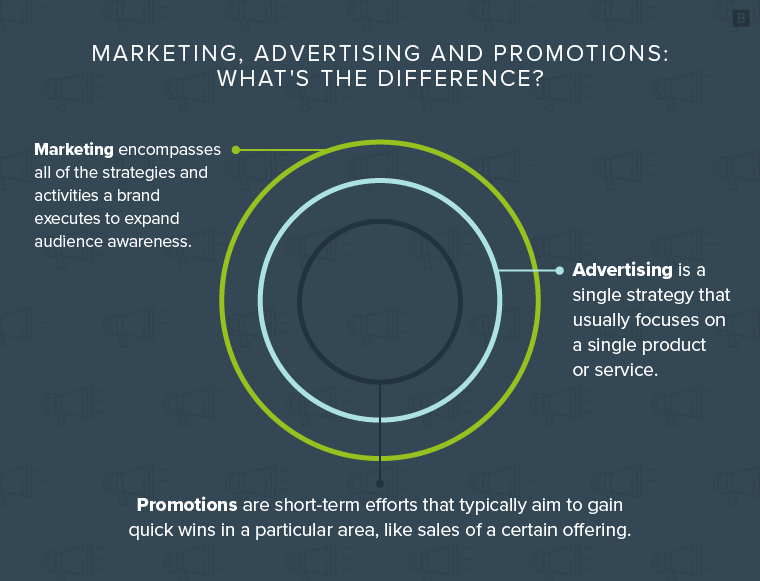
Marketing
Think of marketing as the overarching umbrella. It encompasses all of the strategies, activities, campaigns, messaging and online outreach that your brand executes to expand audience awareness of your brand logo, the business and its offerings. Marketing efforts include industry and audience research to make sure the brand is leveraging the right messaging in each ad, blog, one-sheet, eBook and other collateral.
Advertising
Advertising is just a single strategy under the umbrella of marketing, typically with the purpose of calling attention to and/or educating the company’s audience about a certain product or offering. Advertising is also typically an ongoing process, where goals include boosting customer loyalty and raising awareness around the brand’s service portfolio.
Promotion
Sales promotion efforts and approaches may overlap a bit with advertising — i.e., a business might use a traditional ad as part of its sales promotion strategy. However, the key difference here is that where advertising is usually part of a continual campaign focused on increasing loyal customers or educating the audience, sales promotions are more short-term.
The goal of a promotion, more often than not, is to boost sales, garner attendees for an event and/or increase revenues in a “quick-wins” kind of way. This usually involves the use of customer incentives to support purchasing motivation. A simple example is a brand offering deep discounts for an after-holiday sale. Customers benefit from cheaper prices, and the brand breeds a sense of urgency while boosting sales and clearing out last year’s inventory. To implement speed boosting of your discount delivery, all your products need to be updated in your database. Try to use ecommerce scraper to keep your product records from various online stores and marketplaces.
What Are the Main Differences?
At first glance, marketing, advertising and promotion seem like they mean the same thing — but there are slight differences that are important to note! Here are the main differences:
- Marketing: A step-by-step strategy that invoices product, price, place and promotion — otherwise known as “the 4 P’s of marketing”. For example, when implementing the “price” aspect of the marketing strategy, it is important to create a sales invoice that accurately reflects the price of the product or service being offered to the customer. Implementing efficient billing processes is important to maintain solid customer relationships and ensure smooth business operations. Utilizing tools like online invoice software which offers printable invoice templates can greatly facilitate this process. A sales invoice example may include details such as the product or service name, quantity, unit price, and total cost.
- Advertising: Advertising is a one-way communication from you to potential customers, and it’s often paid for.
- Promotion: Promotions can refer to any sort of marketing communication.
12 Promotion Ideas to Drive More Sales for Your Business
You know your organization has a lot to offer — but coming up with ideas to make sure everyone else knows that is no small task. Even the most creative minds can find themselves in a rut from time to time. Luckily, we’ve collected some of the most inspirational promotional ideas to kickstart your marketing strategy!

Raising Revenues Online and In-Store: Sales Promotion Ideas
It isn’t hard to get stuck in a rut with sales promotion ideas, especially if the company is working to churn creative promotions out all the time. Let’s take a look at a few unique promotion models you can consider to raise sales at your brick-and-mortar stores or e-commerce store:
1. Ditch the Price Cut and Go for the Upgrade
Sales are so last decade. Everybody can slash prices (or create the illusion of such with red slashes and lower amounts on their price tags). But customers — especially in the B2B space — are hip to this game, and with so many different options for shopping around for goods and services, it isn’t difficult for decision-makers to discern a fair price for a brand’s offerings.
As OKsuzi Marketing CEO Suzanne Brown suggests, kick this idea to the curb and replace it with an offer to upgrade.
In other words, instead of cutting prices, offer customers the next tier up (or the “premium” offering, but at the “basic” price). Another approach to consider here is to include a complimentary add-on service as the upgrade. As Brown pointed out, this won’t just help you boost sales; it will also help your marketing team better understand the upgrade opportunities that are most attractive to your core customers.
You may see this a lot with subscription-based software services. Take Microsoft’s Xbox Game Pass service, for example. They offer the “premium” product, called Ultimate, for only $1 per month for new subscribers.
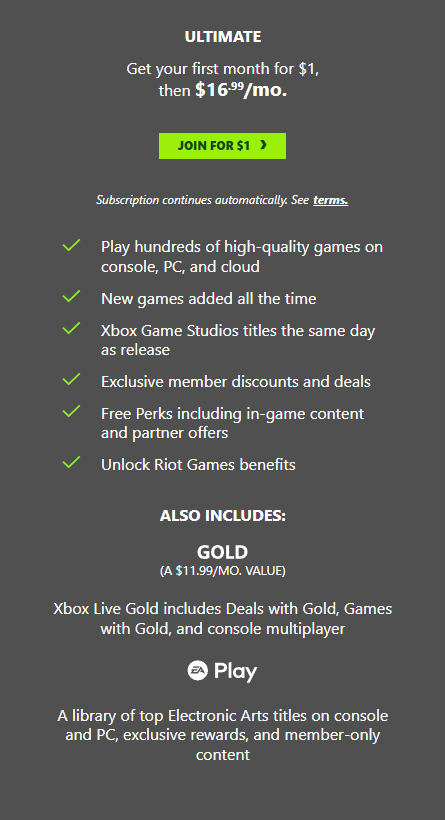
2. Support Your Loyalty Program With Gifts and an Exclusive Club Vibe
Customer loyalty is key, and many businesses garner it through a loyalty club. However, it’s not enough to simply have a loyalty program in place – you also have to promote it and make it worth customers’ time.
A perfect example here is Costco.
If you’re a Costco member, you’re well aware of the perks — you can shop at the warehouse stores during any regular business hours, use their gas stations and reap a whole host of other advantages (i.e., buying a 20-pack of socks and an industrial size tub of Twizzlers in the same place). And chances are good that you received some type of gift when you signed up for your membership (in addition to all those free samples).
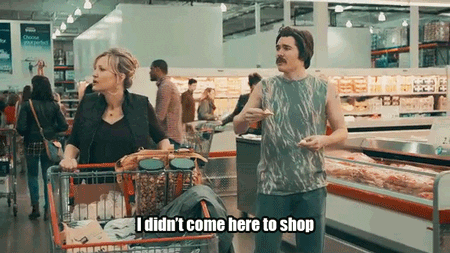
Costco does let non-members shop during certain hours, but their experience is considerably limited compared to that of a member — so much so that it simply makes sense to sign up and become a part of their exclusive club. While this membership is a bit more than the traditional loyalty program, you can take the same approach with your promotion by offering small bonus gifts when clients become members. In addition, create that exclusive club vibe by providing special offerings, services or other specials just for those in your loyalty program.
3. Hyper-Targeted Sales and Promotions
If offering an upgrade doesn’t work for your business model, fear not. Customers still love sales, discounts and promotions. And in the current age of data-driven personalization, you can take this traditional promotion to the next level.
First, as opposed to simply blanketing your entire audience with non-discriminate sales prices, tailor a promotion just for a certain subset of customers.
Or, better yet, provide individualized discounts for top customers based on their purchasing history and other preferential data.
A great example of this is Starbucks and their mobile app. The app tracks and collects customer purchases, interactions and other data to offer hyper-personalized promotions and updates unique to each customer, based on their preferences. For example, if you buy a lot of lattes through the app, it will recognize that and perhaps show you new latte flavors that the company releases.
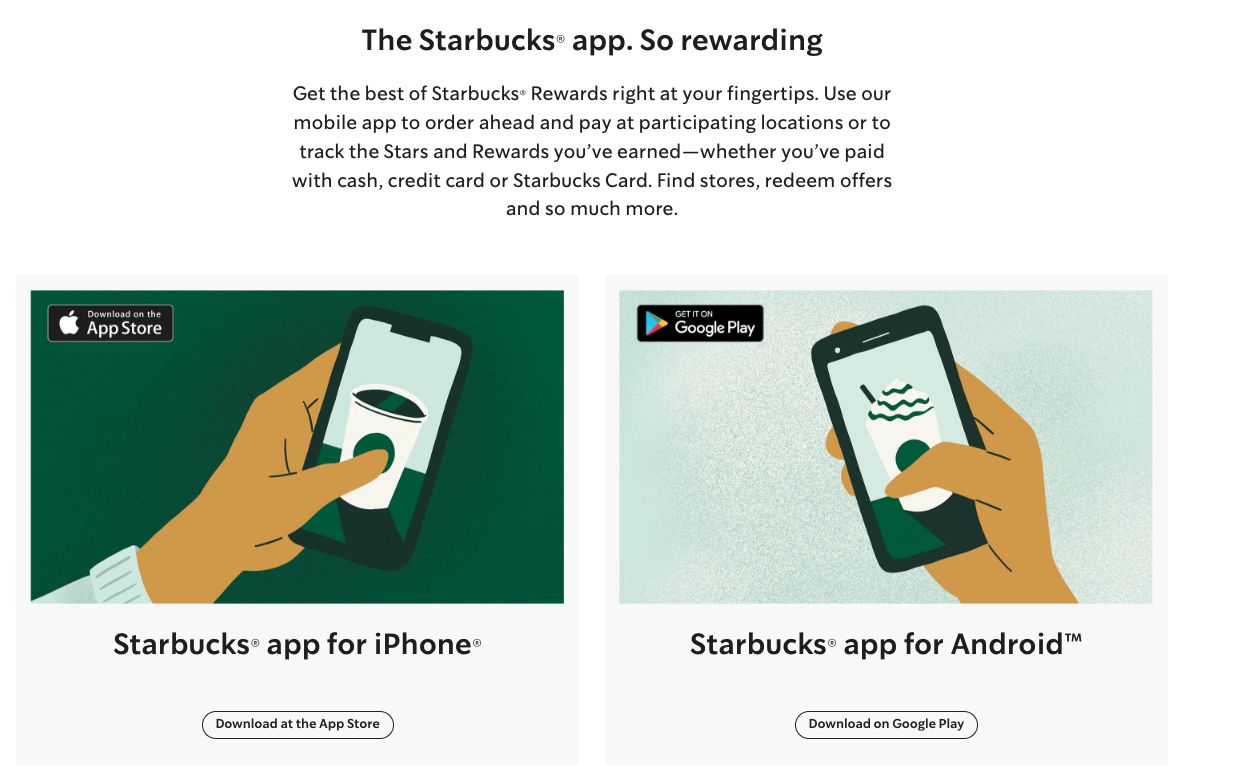
As Voucherify Co-Founder and CMO Michal Sedzielewski noted, a laser-focused, personalized promotion like this hinges on the business being able to collect, analyze and leverage data at just the right time. But the payoff is considerable.
“This means sending 1:1 personalized coupons to specific segments at the right time, prompting precalculated cart-level discounts to upsell and eventually increase average order value, and rolling out referral and loyalty campaigns using an omnichannel approach,” Sedzielewski said.
4. Consider a Flash Sale Promotion
Targeted sales can be beneficial for repeat customers, but what about when you’re trying to bring in fresh faces? Flash sales are a great promotion idea to get potential customers into your store and interested in exploring your services. When some people are wary of trying something new, they may wait for the opportunity to try it at a discounted price. Creating a sense of urgency and offering a sale with an expiration date can encourage people to give your store a shot.
There’s an opportunity to put this special offer on display throughout your marketing campaign — not just outside of your store to intrigue passers-by, but also across your social media channels and your e-commerce store. Paid advertising can work in your favor here — getting this promotional deal in front of the faces who wouldn’t normally see it can be valuable in the long run.
Subscribe to
The Content Marketer
Get weekly insights, advice and opinions about all things digital marketing.
Thank you for subscribing to The Content Marketer!
If You Build It, They Will Come: Creative Event Promotion Ideas
Supporting loyal customers and boosting sales are critical pursuits both online and off. Today, though, more brands are aiming for deeper connections with their target audience through experiential and event-based marketing. And once you and your team have gone through the work to create your event marketing plan, you need to promote the event and encourage attendees to actually show up.
While strategies like sending out email invitations, posting event details on your various social media channels using a social media tool and traditional ticket sales will certainly help, there are some more unique and creative promotions you can consider including in your event marketing:
5. Play Hide and Seek With Event Tickets
This is a really fun one for you, your marketing team as well as your customers. Leading up to your event, you can hide tickets in the local area (or in your own product packaging, a la Willy Wonka). There are a few ways you can do this:
- Make it a mystery: Promote the fact that tickets are hidden around town, but don’t reveal where they might be. This strategy lends a bit of mystery to the promotion. And, as a bonus, you can publicize when each ticket is found (or have users leverage a hashtag and post on social media) to keep the buzz going and maintain attention on your event.
- Post clues: For a more interactive experience, you can create a scavenger hunt promotion, where you offer up clues for ticket locations.
- Host social media contests: If playing hide and seek isn’t your brand’s thing, you can also host social media contests (and garner attention with the help of a hashtag) and provide event tickets as the prize. For instance, for its sponsored Timbersports British Championship event last year, tool brand Stihl offered the opportunity for customers to pass a quiz in order to be entered into the prize drawing.
6. Bring a Sneak Peek Performance to the Streets
If the event includes a performance element, consider breaking away from the stage and offering a preview, live in the streets, flash mob style. This theatrical approach lets you show off the talent that event attendees will be treated to, while creatively promoting the event itself.
While not a real-world example, one of the best instances to come to mind is The Office character Andy Bernard, and his fellow Sweeney Todd cast members. In this particular episode, showman Andy brings the cast of his upcoming play to (where else) the Dunder Mifflin office.
Nard Dog knows what he’s doing here — as a result of this stunt, nearly every one of his fellow co-workers attends his performance.
Taking a page from Andy’s playbook, you can consider scaling this out to a short performance near the event location, or in a well-populated local commons area that’s popular with your target audience.
7. Hire an Influencer
You can also leverage an influencer or brand ambassador partnership to spread the word about your event. This approach comes with the added advantage of dual audiences — not only will your own core audience see this promotion from your chosen brand ambassador, but the influencer’s own group of followers will be exposed to event information as well. In this way, you extend your brand’s reach and improve the chances that event details will get in front of as many eyeballs as possible.
However, as with any influencer partnership, it’s key to choose wisely. An invitation to an event that doesn’t align with the influencer’s brand and the interests of their audience will more than likely flop. As with any marketing and promotional tactic, there are pros and cons here – read more about these and industry experts’ takes here.
When pulled off strategically, an influencer’s stamp of approval on your event could be just what you need to boost ticket sales and attendance. Take the #Revolvefestival from fashion brand Revolve, for instance. Despite being hosted during the very same weekend as Coachella, Revolve has been able to build attendance year after year thanks to the buzz created by brand influencers.
Ring That Dinner Bell: Restaurant Promotion Ideas
Boosting sales in the restaurant industry is quite different compared to other traditional business tactics. Much of the customer base relies on the culinary preferences of those in the local area — for instance, a seafood joint in a landlocked area known for its cattle production might raise a few questioning eyebrows.
But with the right attention-grabbing restaurant promotions, you can make customers hungry for exactly what you’re serving up. Take ‘em to flavor town (I’m sorry) with these unique promo ideas:
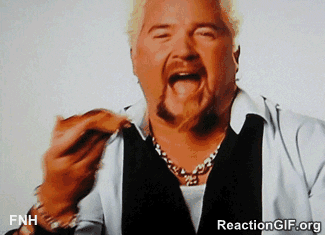
8. Draw Them In From the Door – Or Beyond
This strategy basically takes the flash mob performance approach for event marketing, but with a food-friendly spin. There are a few different ways a promotion like this can go:
Show it Off in a Sample Spread
While many restaurants take the approach of posting their menu in a window or door-side display, consider taking this to the next level with a sample spread of actual food. If you’ve ever been in a particular fancy eatery that offers a cheese or dessert cart, you can probably see where I’m going here. It’s pretty difficult to refuse that amazing piece of chocolate cheesecake when it’s right in front of you, after all.
Instead of just showcasing your desserts, consider working with your kitchen to choose dishes that can sit out a while and still look fresh and delectable. Putting this on display for your patrons to see as they wait for seating, for example, can help your waitstaff move specials or upsell appetizers.
Take it to the Streets
Another approach is to take that sample spread to the streets. Don’t be afraid to get creative here — you can even consider having a server walk a tray of prepared entrees or dishes in your restaurant’s local promenade or other nearby areas. The sights and smells of the actual plates customers can enjoy at your eatery might just have diners following your server back to the restaurant.
9. Keep it Safe and Sanitized — and Make it Obvious
In a post-COVID world, there’s a lingering concern for personal and public health among many restaurant-goers. Some people may even be deterred from your establishment by a lack of visible sanitization policies or signage that tells them their table has been properly cleaned.
So, while it’s not outwardly a promotional idea, having candid and clear indications of your restaurant’s cleanliness can certainly have the same effect as a profound promotion. Try:
- Hand sanitizing stations.
- QR code menus (made via QR code maker).
- Posted sanitation policies at the door.
- Distanced seating.
10. You Get A Coupon, You Get A Coupon!
When increasing your sales is at the top of the priority list, you don’t necessarily need to focus on bringing more customers into your restaurant. Loyal return customers are the people who would be willing to promote your business via word of mouth, but most importantly, they would do it without incentive. But instead of giving them the short end of the stick, take advantage of the opportunity to hand out coupons after a specific number of visits to your restaurant.
You can also consider a reward referral program — offer frequent visitors a free gift if they bring in a new customer, such as a free meal or beverage. This is a great way to ensure your existing customer base continues returning and new customers check out your place of business.
11. Make a Splash With a Celebrity Diner
One of the best ways to bring people into your eatery is by bringing a celebrity to dine. This promotional strategy, in essence, takes the influencer marketing approach into the real world, and then full circle back to social. After all, snapping a single photo of someone famous eating at your restaurant can be better than a wall full of autographed headshots.
As Toast’s Robert Hale rightly pointed out, though, not every business has the budget for this kind of promotion. In these instances, consider tapping a local celebrity that may be more inclined to help businesses in the area. Or, as Hale suggests, combine the celebrity promo with a charitable cause and donate a portion of the night’s proceeds to the organization of the star’s choosing.
One of the best examples here involves the beloved Bill Murray, who, for a promotional event, tended bar at his son’s Brooklyn restaurant 21 Greenpoint.
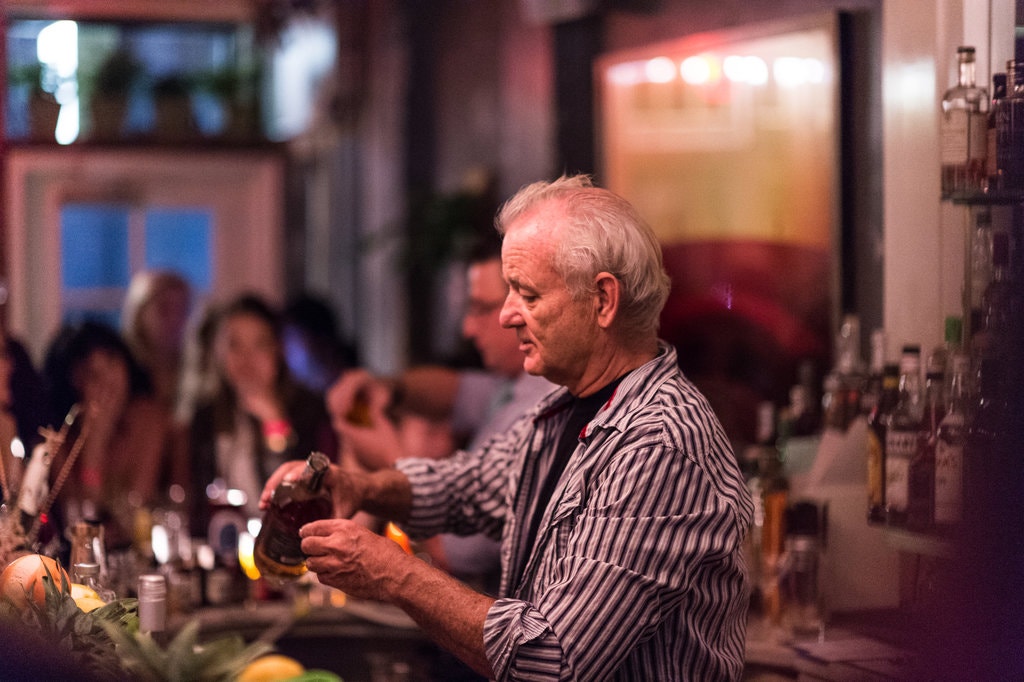
12. Make the Most of the Holidays — While Encouraging Check-Ins
Holidays are some of the biggest sales days for restaurants, especially for customers who’d rather focus on their guests than food prep. These special days also offer the perfect opportunity for a themed promotion tailor-made for social.
Many bars, restaurants and eateries have taken this approach. For instance, you can host a Mother’s Day brunch and encourage guests to snap photos of their eggs benny to post and check-in on social. Halloween is another ideal social-friendly holiday for restaurants and bars to take advantage of. Consider hosting a costume contest where the cost of entry is a post, like and check in on social.
Promotions like these help you show off your restaurant through the eyes of your customers. And, best of all, user-generated content like social media posts and check-ins are a low-cost and highly effective way to promote your brand and your food and beverage offerings.
13. Support a Local Cause
Sponsoring or supporting a positive effort in your restaurant’s local community is another fantastic way to get your name out there.
Plus, local sponsorship or donating to a charitable organization is an ideal way to humanize your brand and show that your restaurant is committed to the local community.
This strategy can be as simple as choosing a local sports team and sponsoring the purchase of new jerseys or gear. Your restaurant could also cater a nearby charitable event, or partner with an area school to support students’ culinary education. Sending a chef to a local institution or hosting a class at your restaurant can be a low-impact way to support your community — and is also the perfect photo op for social media and beyond.
Boosting sales and creating buzz around your business’s latest offering isn’t always easy, but it certainly doesn’t have to be boring. Build some creativity into your next promotional campaign with these ideas, and you’re sure to make a splash with your customers and your competition.
Editor’s Note: Updated March 2023.





